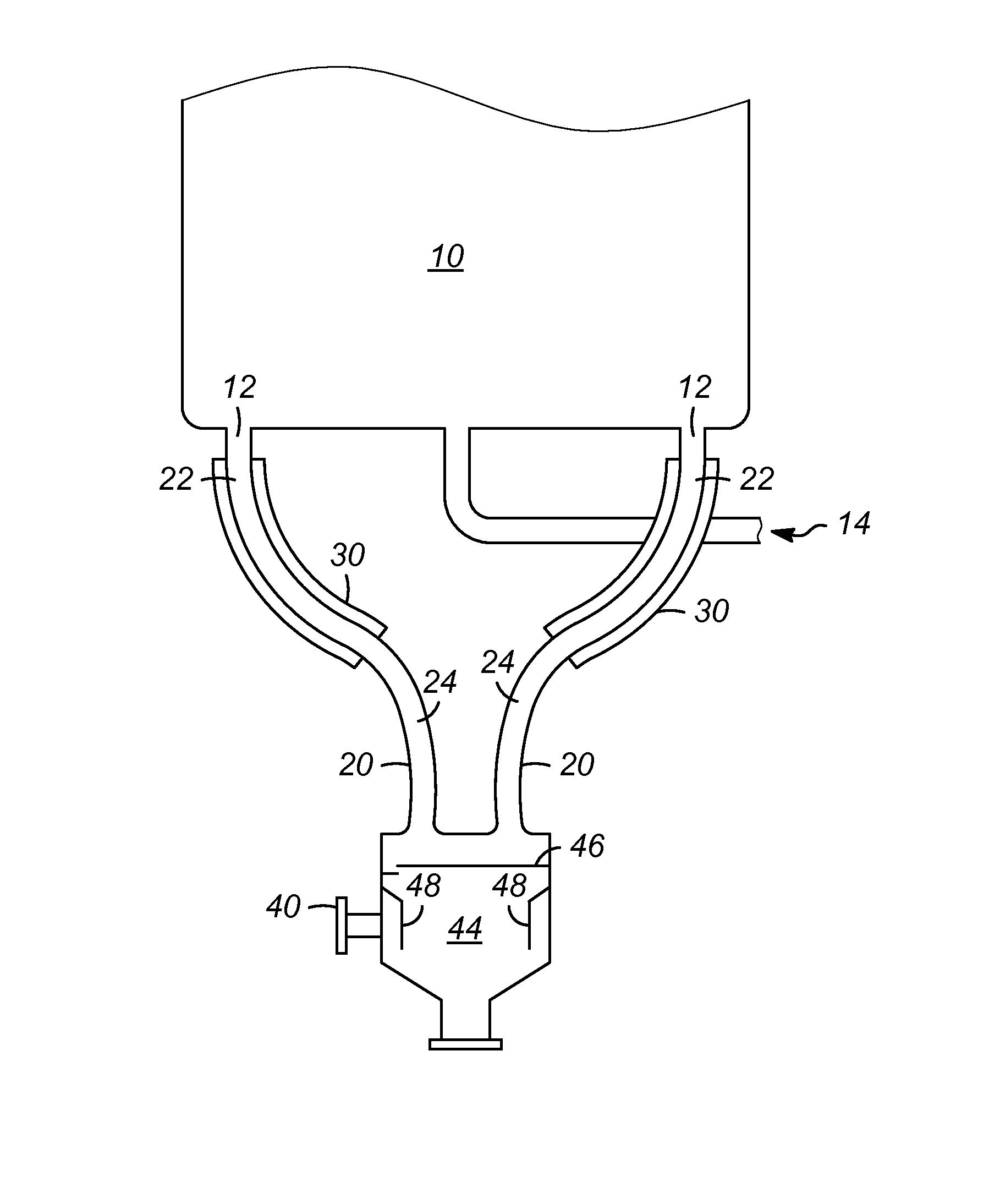Dehydrogenation reactor catalyst collector with hot hydrogen stripping zone
- Summary
- Abstract
- Description
- Claims
- Application Information
AI Technical Summary
Benefits of technology
Problems solved by technology
Method used
Image
Examples
Embodiment Construction
[0008]Catalysts are very sensitive to poisons, and are very expensive. Catalysts are among the most expensive items in a petrochemical plant, and maintaining catalysts contributes to significant savings in a process. A typical catalyst is used in a process and over time deactivates. The catalyst is regenerated, or reactivated, by passing the catalyst from a reactor to a regenerator. In many petrochemical processes, the regeneration comprises burning off carbon that has deposited on the catalyst during the catalytic process. In addition, other components such as sulfur compounds also deposit on the catalyst. The catalyst can also include precious metals, such as platinum, and the presence of sulfur interferes with the regeneration step where the platinum is redispersed.
[0009]The dehydrogenation process of alkanes for the production of olefins utilizes a catalyst that incorporates platinum, or other metals from the platinum group. As used hereinafter, reference to platinum also is int...
PUM
| Property | Measurement | Unit |
|---|---|---|
| Temperature | aaaaa | aaaaa |
| Temperature | aaaaa | aaaaa |
| Frequency | aaaaa | aaaaa |
Abstract
Description
Claims
Application Information
 Login to View More
Login to View More - R&D
- Intellectual Property
- Life Sciences
- Materials
- Tech Scout
- Unparalleled Data Quality
- Higher Quality Content
- 60% Fewer Hallucinations
Browse by: Latest US Patents, China's latest patents, Technical Efficacy Thesaurus, Application Domain, Technology Topic, Popular Technical Reports.
© 2025 PatSnap. All rights reserved.Legal|Privacy policy|Modern Slavery Act Transparency Statement|Sitemap|About US| Contact US: help@patsnap.com

